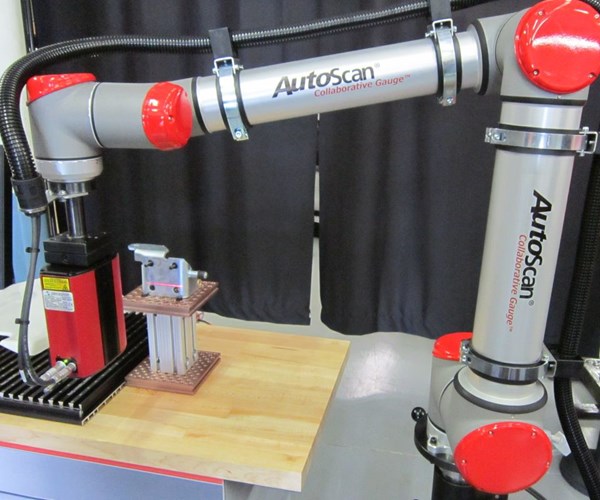Using Collaborative Robots for Laser Scanning
This device is said to be the first programmable laser scanning system for automated 3D scanning, measurement and gaging using a collaborative robot.
Share






The AutoScan system combines laser scanning technology and collaborative robot automation to enable part measurement routines to be performed alongside people without the safety fencing that’s required for conventional robots.
Collaborative robots vary in design, but they all feature some combination of sensor technologies that enable them to function safely alongside humans in a shared area, unlike conventional industrial robots that operate autonomously inside a safeguarded cell. The common application for these in a shop is loading/unloading parts from machine tools.
However, this device from is said to be the first programmable laser scanning system to enable automated 3D scanning, dimensional measurement and dimensional gaging leveraging a collaborative robot platform. Its scanning sensor is mounted to the arm of a six-axis collaborative robot, which uses built-in force-sensing technology that causes it to stop its movement if it makes contact with a person.
Related Content
-
Lean Approach to Automated Machine Tending Delivers Quicker Paths to Success
Almost any shop can automate at least some of its production, even in low-volume, high-mix applications. The key to getting started is finding the simplest solutions that fit your requirements. It helps to work with an automation partner that understands your needs.
-
Cutting Part Programming Times Through AI
CAM Assist cuts repetition from part programming — early users say it cuts tribal knowledge and could be a useful tool for training new programmers.
-
Setting Up the Building Blocks for a Digital Factory
Woodward Inc. spent over a year developing an API to connect machines to its digital factory. Caron Engineering’s MiConnect has cut most of this process while also granting the shop greater access to machine information.













